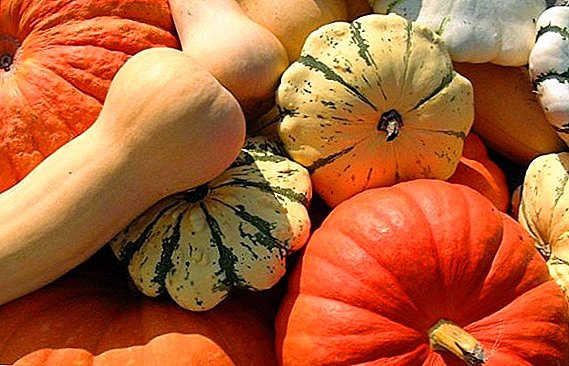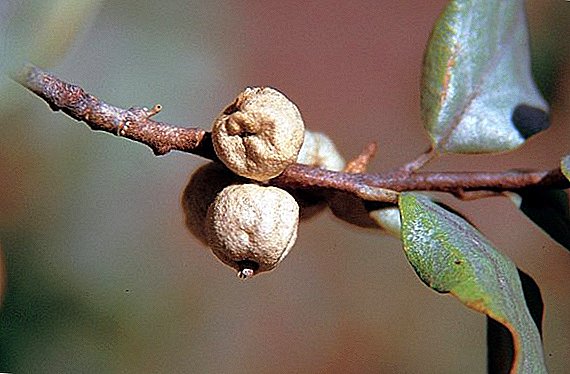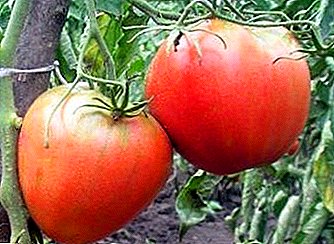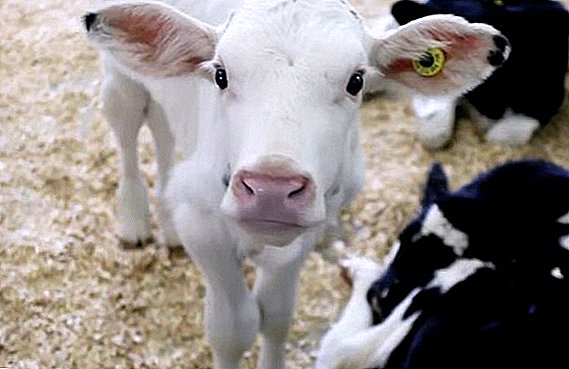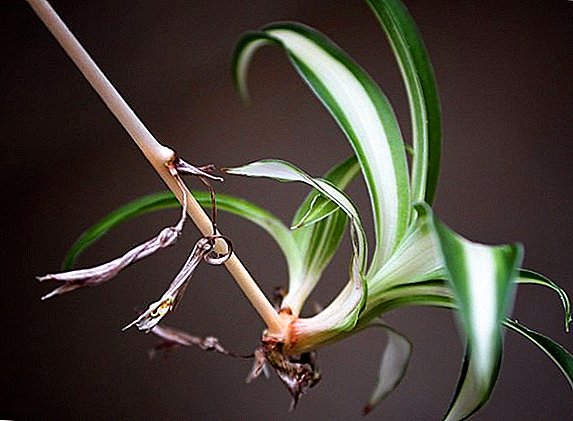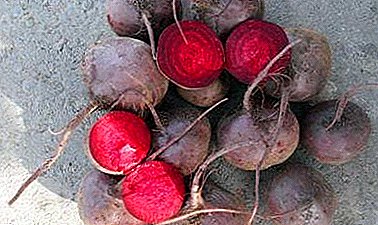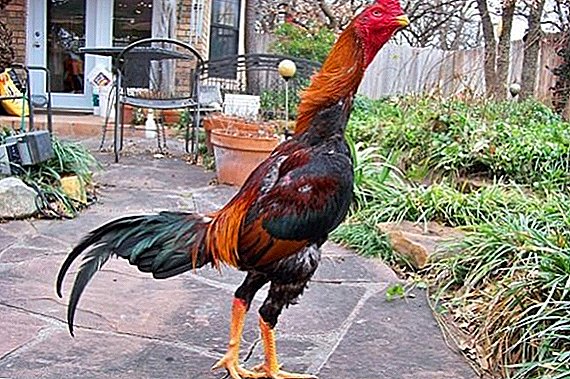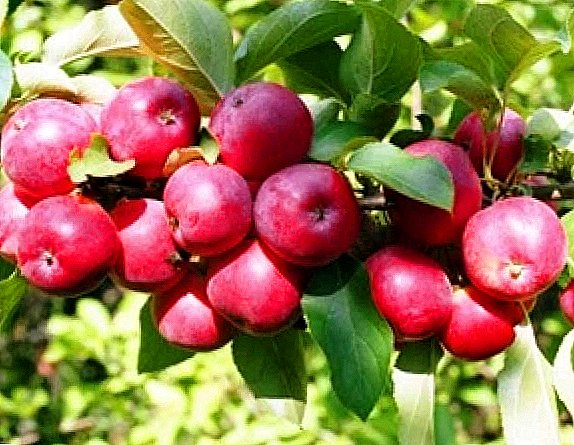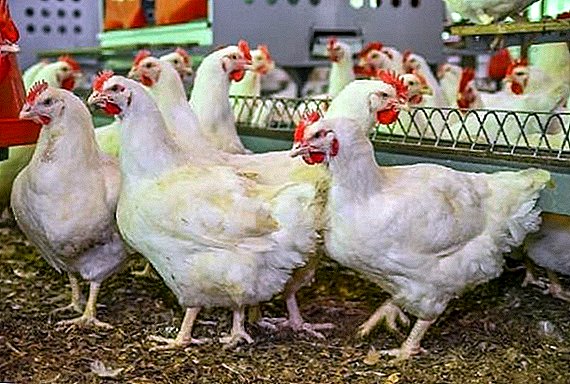 Broilers, or crosses, as they are called in science, are bred in order to get the bird with the desired characteristics.
Broilers, or crosses, as they are called in science, are bred in order to get the bird with the desired characteristics.
Today we look at the description of the Arbor Eikres broiler, its main differences and peculiarities of home keeping.
Breed breeding
Arbor Aykres belongs to the new breeds of broilers, which every year become more and more popular among experienced poultry farmers. The breed was bred thanks to the common efforts of the HubbardIza breeding group, which included scientists from France, the United States and Britain.  This broiler is absolutely unique, since no harmful transgenic technologies were used for breeding, and the result exceeded all expectations, as it was possible to get a huge bird with a record growth rate.
This broiler is absolutely unique, since no harmful transgenic technologies were used for breeding, and the result exceeded all expectations, as it was possible to get a huge bird with a record growth rate.
Broiler has excellent characteristics that are ahead of other indicators of previously raised birds, so Arbor Aykres has very high chances to become a leader among broilers in the shortest possible time.
Did you know? The word "broiler" comes from the English "broil", which means "fry on fire."
Description and Features
Each broiler breed has its own characteristics that allow it to be distinguished from the others, therefore, we will consider a detailed description of the appearance of the bird, its character and main behavioral nuances. 
Appearance and physique
Bird Arbor Eikres is characterized by a knocked down, strong angular body, a wide breast and back, short legs, which are located at a sufficiently wide distance from each other, with powerful yellow paws.
Such breeds as ross-308, ross-708, cobb-700, and hubbard are referred to broiler crosses.
Chicken breasts are much wider and rounder than roosters, but males, in turn, have voluminous hips and legs. The head of a small size is planted on a slightly curved short neck.
On the head are a small comb and earrings, the eyes are small, orange, the earlobes are magnificently covered with down, almost invisible. The body is tightly covered with white, not magnificent plumage.
All representatives of this cross have a genetically incorporated beautiful yellow skin tone, so they do not require specialized feeds with pigments, which allow making the carcass more attractive to the consumer. 
Character
Broilers of this breed have an absolutely calm character, they are inactive, spend more time in a confined space than on the street. The bird easily adapts to new neighbors, not aggressive, friendly.
It can be traced fearfulness and detachment from birds of other breeds and people, but this does not affect the performance indicators.
Hatching instinct
Arbor Eikres are bad chickens, and their instinct of motherhood is completely lost. It is impossible to breed this breed at home, since in the second generation the chick does not inherit the genetic indicators of its parents, which makes such an elimination meaningless.
You can get a new generation of crosses only as a result of buying high-quality eggs and their breeding in an incubator, or you should immediately purchase chickens of this breed. 
Performance Indicators
The popularity of the broiler breed directly depends on the productive indicators, while at Arbor Eikres they are quite high.
Growth and weight gain
Arbor Aykres are able to very quickly gain weight with small amounts of feed consumed. By the first month of life, with the right content, broilers reach 2 kg in weight. From now on, mass gain is accelerated, and by the fortieth day of life the broiler grows to 3 kg.
Important! The meat of this breed belongs to low-calorie hypoallergenic products, so it can be used by people with allergies and children.
Adults weigh at least 4 kg, most often their weight reaches 5-6 kg.
Puberty and egg production
Despite rapid weight gain, puberty in the breed in question is slow. Giving eggs to a chicken is only capable of 8 months of life. Broiler egg production is low; in just one year of maintenance, one layer is able to produce up to 120 eggs.
Such a breed as ayam cemeniya also differs by low egg production.
Eggs at Arbor Eikres are small, up to 55 g in weight, white shells. 
Feeding ration
Broilers are birds with an accelerated growth rate, and therefore require a particularly careful selection of the diet.
Adult chickens
The diet of adult individuals consists of 80% of specialized feed, it is called finishing and they begin to give after one month of age.
Learn more about the rules of maintenance and feeding characteristics of broilers, how to feed broilers with feed, what should be the weight of broilers at different periods of life, what to do if broilers do not gain weight.
Such feed is the basis to which the grain mixtures are mixed (corn - 30%, millet - 20%, barley - 10%), household waste in the form of dry bread, boiled potato skins, vegetables, and chopped egg shells. It is useful to give broilers and dairy products, for example, cottage cheese (15 g per day per individual).
The amount of feed consumed for the entire period of growth of the bird is about 6 kg per individual.  The diet of adult chickens is enriched with useful additives, for example, Baker's yeast (1 g per day per individual). As vitamins, grated carrots and cabbage are suitable: they are introduced into the diet gradually, after a month of life, 5 g per day per individual, bringing to 30 g per day.
The diet of adult chickens is enriched with useful additives, for example, Baker's yeast (1 g per day per individual). As vitamins, grated carrots and cabbage are suitable: they are introduced into the diet gradually, after a month of life, 5 g per day per individual, bringing to 30 g per day.
In order to better digest the food, the bird is filled with small gravel in a separate container.
Take care that the bird is constantly provided with clean and fresh water, it is changed 2 times a day, while thoroughly washing out the drinkers.
Chickens
Broiler chickens absolutely can not tolerate natural food, so they are fed with specialized feed. If you do not listen to the recommendations and offer eggs, cereals and vegetables to chickens, this can provoke severe stomach upset.  Broiler cubs buy feeds according to their age, so be sure to pay attention to the packaging and compare the available information with the actual age of the bird that you need to feed them.
Broiler cubs buy feeds according to their age, so be sure to pay attention to the packaging and compare the available information with the actual age of the bird that you need to feed them.
From 1 to 5 days of life, chicks are fed with purchased prelaunch feed, from 6 to 30 days - with starters. From 3 days of life, chickens are added to the diet of fresh chopped greens, in the fall and winter, when there is no greenery, the birds are given germinated grains or grass meal.
There are hundreds of manufacturers of animal feed, which differ in the place of production, content and price, so you can not advise the best company. It is recommended to purchase feed in specialized stores, carefully inspect the packaging for integrity, pay attention to the shelf life and storage conditions.
Feed in the feeders should always be in sufficient quantities. Also provide the chicks with fresh, clean water throughout the day, as the broilers drink plenty of water when consuming dry food.  Combined feed must be supplemented with vitamin liquid supplements, which should be purchased in accordance with age. In addition, chickens are offered disinfectant solutions that are able to protect a weak body from viral and bacterial infections.
Combined feed must be supplemented with vitamin liquid supplements, which should be purchased in accordance with age. In addition, chickens are offered disinfectant solutions that are able to protect a weak body from viral and bacterial infections.
On day 3 after hatching, chicks are recommended to give Baytril, an antibacterial agent, as a preventive measure (dissolve 0.5 g in 1 liter of water at room temperature). To avoid the disease of broiler coccidiosis, a birdcox is given on the 14th day of life: 1 g of the drug is dissolved in 1 liter of water.
Also, chickens as a vitamin supplement offer fish oil - the amount of money per individual should be about 1 g per day. After 2 weeks after hatching, the bird is provided with a sufficient amount of calcium-containing products, represented by crushed chalk, shell, eggshell in the amount of 10 g per 1 kg of feed.
Content Features
Broilers need comfortable housing conditions that directly affect the health and normal development of the bird. 
In the chicken coop with walking
When keeping broilers in the hen house, take care of the cleanliness of the room, clean it regularly, change the litter to dry and clean. Initially, the chicken coop is cleaned, during which litter, feathers, food debris, wet and dirty litter are removed.
Important! For washing you can not use ordinary household chemicals, which you wash the surface in the house, since many products are toxic to poultry and have a very bad effect on the health of chickens.
Cleaning is done with a stiff brush, which passes through the floor, perches and other surfaces, all the garbage is taken out of the hen house. Every month, it is recommended to wash the chicken coop with disinfectants.
Learn how to properly disinfect the chicken coop.
Popular means for disinfecting chicken coops are Monclavit, Bactericide, and Virocid. They are used in accordance with the recommendations on the package.  Timely disinfection of the chicken coop helps protect chickens from viruses and bacteria that develop in the dirty litter with droppings due to high humidity and warm environment.
Timely disinfection of the chicken coop helps protect chickens from viruses and bacteria that develop in the dirty litter with droppings due to high humidity and warm environment.
The best material as bedding is pine chips and sawdust. Chopped straw and hay is also a popular litter, but it is worth noting that such material provokes the development of mold - to avoid problems, it is mixed with wood chips 50 to 50. Thanks to this litter, the floor in the coop will be dry for a long time, which will complicate the development of bacteria and fungi.
The optimum temperature in the chicken coop is not less than + 22 ° С and not more than + 28 ° С, air humidity is at the level of 70%.
The room where broilers are kept should be well ventilated using elementary ventilation to ensure that harmful gases released from the litter evaporate in time and fill the chicken coop with fresh air.  Ventilation also minimizes the risk of viruses and infections spreading inside the chicken coop.
Ventilation also minimizes the risk of viruses and infections spreading inside the chicken coop.
It is not necessary to equip the territory for walking near the chicken coop: broilers are low-active birds, in addition, there is a tendency to lose weight or slow down the weight gain if broilers have a lot of free space.
In cages
It is very convenient to keep broilers in cages, at the same time space is saved, electricity (due to reduced costs for ventilation, lighting and heating), the amount of feed consumption is also reduced, as chickens scatter it less.
Limited movement allows you to achieve active mass growth. Keeping in a cage also allows for easier maintenance and cleaning.
In order for chickens in the cages to feel comfortable, in a single cage of 1 sq. M. m. can be planted no more than 10 individuals, with the expectation that they will quickly gain weight and fill the previously free space.  If chute feeding is envisaged, then 2.5 cm of the feeder is allocated for one individual: in this way, the required size of the feeders for installation in the cage is calculated.
If chute feeding is envisaged, then 2.5 cm of the feeder is allocated for one individual: in this way, the required size of the feeders for installation in the cage is calculated.
The air temperature in the cage should be at + 18 ° C when the birds reach 2 months of age, before that the temperature is maintained at + 24 ° C. Optimum humidity - 60%, due to the large openings in the cells good ventilation is observed.
Did you know? The largest representative of chickens in the world is considered to be the rooster of the breed Rooster Korbun, who lived in Great Britain and was entered into the Guinness Book of Records in 1992: his weight was 11 kg with an increase of 91 cm.
Broilers grow in cages in approximately 70 days, this age is optimal for slaughter. After 70 days in chickens, growth is significantly slowed with the same active feed intake.  Thus, keeping Arbor Eikres broilers in the household is not difficult, the main thing is to provide the birds with the necessary conditions and high-quality food, so that as a result they will receive high-quality and tasty meat.
Thus, keeping Arbor Eikres broilers in the household is not difficult, the main thing is to provide the birds with the necessary conditions and high-quality food, so that as a result they will receive high-quality and tasty meat.


